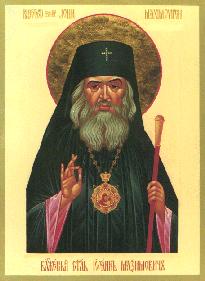The Sublime Carthusians and Their Equally Sublime Chant
Here is a link to the English Carthusian (Roman Catholic) monastery of Parkminster. Turn up the volume on your computer and listen for a while to the wonderful chant of the monks--so peaceful, so poignant, so heavenly like all good ecclesiastical chant.
The Carthusian Order was founded by the monk Bruno in 1098. Their way of life is like that of the Desert Fathers in a medieval cloister. They cherish silence and anonymity as they seek communion with God.
The Carthusian Order was founded by the monk Bruno in 1098. Their way of life is like that of the Desert Fathers in a medieval cloister. They cherish silence and anonymity as they seek communion with God.








7 Comments:
Christ is risen!
the story of saint Bruno & the Grande Chartreuse exist in French in a very nice comic strip ("comic", strange English word to speak of something so serious!)
see at the Guigues le Chartreux Feastday, 31th March :
http://www.amdg.be/sankt/mar31.html#PBOL
may the prayers of such saint, one day, bring the erring ones in the West back on the one and only path to Christ : His one and only Church...
Jean-Michel
I recently got to see a Carthusian missal - from what I was told during Holy Week, their rite had an impact on the development of that of Mount Royal (which, I also was privileged to see the original Mount Royal 'English Missal'.)
The understanding is that the Carthusian rite remained unchanged since the days of Bruno, and was not innovative either for the way liturgy had been done previously - so it representative of local 9th c. liturgy (of the monastic type.)
Welcome, Ari!
Yes, the Carthusian Rite was, until Vatican II, unchanged since the time of Bruno. And after Vatican II, it was changed only in a few small things like mass facing the congregation. I'm not aware of specifics, but it seems that their Divine Office was not significantly altered since they are, after all, an order devoted exclusively to prayer.
Christ is risen!
dear John,
Saint Bruno started his Order end of the 11th century. He would not have made any special liturgical work before the start of the next century. Based on what? No internet to look for web.archive.org on benedictine.org before 8th century, I'm afraid :-)
If based on some very conservative Benedictine books, probably then he will indeed have lots of good. While the filioque AND the accompagnying theology was enforced in the whole West since 817, and thus end of the 11th century, very few chances that such a problem, with other new one, wasn't yet being teached to him.
I'm afraid that without having in hand an authentic copy of the original (12th century?) carthusian Office, we can't say much of the kind of modifications. Speculations on authenticity, we'll find plenty, for all kind of old liturgies. Mainly romantic reasons. No "smoking gun" helps lots romantics to share their dreams.
Indeed, thanks to the kind of Order he has founded, prayer was center of it, speculative theology wasn't the center of it, nor political games. So if must have indeed brought some peace in their liturgical works, and some better preservation than for others.
For "mass facing the congregation", Vatican Church has not invented much : in the 9th century, it was known too.
I posted yesterday a very famous picture of that on my blog, from Metz, the biggest metropole south of Germany.
Very interesting: thank you all.
And sublime indeed is that chant.
There's something about chant made by real monks that's really special. Professional, non-monastic musicians doing chant is a lot like white ppl trying to sing the blues.
But, yeah, the Carthusian stuff is good chant.
Post a Comment
<< Home